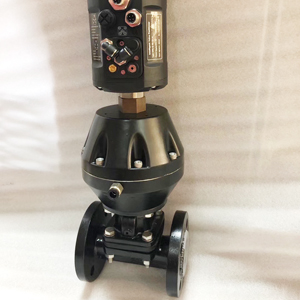When it comes to efficient flow control in industrial systems, choosing the right valve type is crucial. Diaphragm valves, including sanitary diaphragm valves, pneumatic diaphragm valves, and 3 way diaphragm valves, are widely recognized for their versatility and reliability. Among these, the weir diaphragm valve stands out for its unique design and specialized applications. Understanding the key differences between weir diaphragm valves and straight-through diaphragm valves is essential to ensure optimal performance, whether you’re managing corrosive media, abrasive slurries, or high flow rates. This guide will explore their design, functionality, and application-specific advantages to help you make an informed decision.
Introduction Weir diaphragm valve
The weir diaphragm valve is a preferred choice among diaphragm valve manufacturers due to its innovative raised saddle design, which minimizes diaphragm stress and extends operational life. Ideal for applications requiring precise flow control, this valve often pairs with options like an air actuated diaphragm valve or a diaphragm valve pneumatic actuator to enhance automation and efficiency. Its ability to handle corrosive and abrasive media makes it a reliable solution in industries such as chemical processing and water treatment.
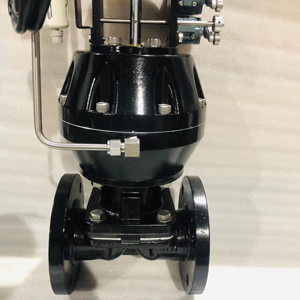
Brief overview of diaphragm valves and their importance in industrial flow control.
Diaphragm valves are crucial components in industrial flow control, valued for their versatility and reliability in handling a wide range of media, from corrosive chemicals to viscous slurries. Their innovative design incorporates a flexible diaphragm that ensures effective sealing, minimizing leaks while offering precise flow regulation. These valves are essential across industries such as water treatment, chemical processing, and biotechnology, where maintaining system integrity and efficiency is paramount.
Introduce the focus of the post: the comparison between weir diaphragm valves and straight-through diaphragm valves.
Weir diaphragm valves
Weir diaphragm valves stand out due to their raised saddle design, which helps reduce diaphragm stress and ensures precise flow regulation. They are particularly effective in applications requiring reliable performance with corrosive or abrasive media. This post will compare weir diaphragm valves with straight-through diaphragm valves, focusing on their distinct features, operational advantages, and suitability for specific industrial needs. Understanding these differences is key to selecting the right solution for your system.
Straight-through diaphragm valves
Straight-through diaphragm valves, also known for their open flow path design, are ideal for applications that involve viscous or solid-laden media. Unlike weir diaphragm valves, their streamlined structure minimizes flow resistance, making them a preferred choice for processes that require high flow rates and minimal turbulence. This post will examine how straight-through diaphragm valves compare to weir diaphragm valves, exploring their distinct features, advantages, and the systems they are best suited for. Understanding these differences is critical to optimizing industrial flow control solutions.
Highlight how selecting the right valve for specific applications can impact operational efficiency and system performance.
Choosing the right valve for specific applications is essential to maintaining operational efficiency and system performance. Factors like media type, flow rate, and required precision determine whether a weir diaphragm valve or another design is the best fit. A well-matched valve design not only enhances flow control but also reduces maintenance needs and extends equipment lifespan, ensuring reliable and cost-effective operation in industrial systems.
Overview of the Weir Diaphragm Valve Design
The weir diaphragm valve features a raised saddle design that allows for precise flow control while minimizing diaphragm wear, making it durable and efficient. This design is particularly advantageous in handling corrosive or abrasive media, reducing stress points and ensuring long-lasting performance. Its compact structure and versatility make it a trusted choice for industrial applications, where reliability and operational efficiency are critical.
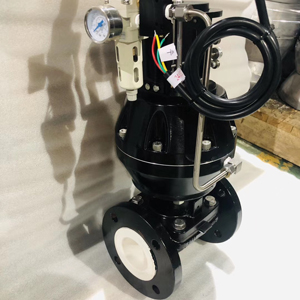
Explain the defining characteristic of weir diaphragm valves—a raised saddle or “weir” within the valve body.
The defining characteristic of weir diaphragm valves is the raised saddle, or “weir,” within the valve body. This design reduces the amount of media in contact with the diaphragm, minimizing wear and enhancing durability. It also enables precise flow control, making these valves ideal for handling corrosive or abrasive media. This distinctive feature ensures reliable performance and longer service life, especially in industrial settings that prioritize efficiency and low maintenance demands.
Describe how the weir design reduces the amount of diaphragm material flexed during operation.
The weir design minimizes diaphragm flexing during operation by limiting the travel distance required for sealing and flow control. This reduced movement decreases material fatigue, enhancing the diaphragm’s durability and extending its service life. It also ensures consistent performance, particularly in demanding industrial environments where reliability and low maintenance are essential.
Touch on the material compatibility options for weir diaphragm valves, supporting use in corrosive or abrasive applications.
Weir diaphragm valves offer a wide range of material compatibility options, including elastomers and advanced fluoropolymers, to handle corrosive and abrasive media effectively. This adaptability ensures that the valve can be tailored to the specific chemical or physical demands of an application, enhancing durability and reducing the risk of premature wear. Proper material selection is critical for achieving optimal performance and longevity in challenging industrial environments.
Understanding the Straight-Through Diaphragm Valve Design
The straight-through diaphragm valve is characterized by its unobstructed flow path, which minimizes turbulence and pressure drop during operation. This design is particularly advantageous for applications requiring smooth media flow, such as handling viscous or particulate-laden fluids. Its straightforward structure promotes efficient cleaning and reduced contamination risks, making it a reliable choice for industries prioritizing hygiene and consistent flow performance.
Functional Differences Between Weir and Straight-Through Diaphragm Valves
Weir and straight-through diaphragm valves differ significantly in functionality due to their design. The weir valve’s raised saddle enables precise flow control and minimizes diaphragm wear, making it ideal for applications with corrosive or abrasive media. Conversely, the straight-through valve’s unrestricted flow path reduces turbulence and pressure drop, excelling in handling viscous or particulate-laden fluids. These differences dictate their suitability, with weir valves prioritizing durability and control, while straight-through models are favored for smooth flow and ease of cleaning.
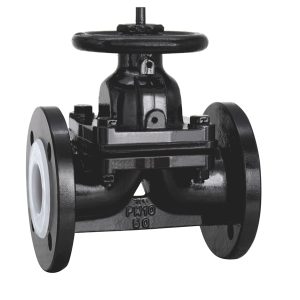
Advantages of Choosing a Weir Diaphragm Valve
Weir diaphragm valves offer notable advantages, including superior durability and precise flow control. Their raised saddle design reduces diaphragm wear by limiting flexing and minimizing contact with corrosive or abrasive media, ensuring a longer service life. This makes them especially effective in handling challenging applications that demand reliability, control, and resistance to harsh operating conditions.
Explain why weir diaphragm valves are ideal for low-pressure applications or when the valve must handle media with suspended solids.
Weir diaphragm valves are ideal for low-pressure applications and media with suspended solids due to their versatile design and efficient operation. The weir-style chamber reduces the diaphragm’s travel distance, enabling precise control and smooth operation, even under minimal pressure. This design minimizes turbulence and prevents blockages, allowing the valve to handle solids-laden media effectively. These features make weir diaphragm valves a reliable choice for industries prioritizing both efficiency and durability in challenging operational conditions.
Outline their compact size and ability to provide reliable sealing against small particles.
Weir diaphragm valves boast a compact size that ensures easy integration into space-constrained systems while maintaining robust performance. Their unique design provides reliable sealing against small particles, preventing leakage and contamination even under challenging conditions. This capability, coupled with their efficiency in handling diverse media, makes them an essential solution for industries requiring precision and cleanliness, such as pharmaceuticals and water treatment.
Advantages of Selecting a Straight-Through Diaphragm Valve
Straight-through diaphragm valves provide several advantages, notably their flow efficiency and ease of cleaning. The unobstructed flow path minimizes pressure drop and turbulence, making them ideal for handling viscous or particulate-laden media. Additionally, their straightforward design simplifies cleaning and maintenance, ensuring reliability in applications that prioritize hygiene and contamination control. These features make them a strong choice for industries requiring consistent flow performance and easy upkeep.
Applications and Industry Use Cases
Weir and straight-through diaphragm valves cater to distinct industry needs based on their unique designs. Weir valves are commonly used in chemical processing and water treatment due to their durability and ability to handle corrosive and abrasive media. On the other hand, straight-through valves excel in industries like food and pharmaceuticals, where their unobstructed flow path ensures hygienic processing and efficient handling of viscous or particulate-laden fluids. These design strengths make each valve type indispensable in applications demanding reliability and precision.
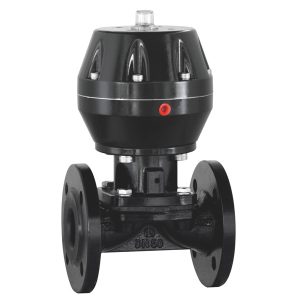
Provide examples of industries and conditions where weir diaphragm valves excel:
such as chemical dosing or slurry pipelines.
Weir diaphragm valves excel in industries and conditions requiring precise flow control and resilience against challenging media. For example, in chemical dosing, their design ensures accurate handling of corrosive chemicals, providing reliable performance under varying pressures. Similarly, in slurry pipelines, weir valves withstand abrasive particles while maintaining consistent flow, highlighting their durability and adaptability in harsh environments where precision and reliability are critical.
Explain scenarios where straight-through diaphragm valves outperform:
e.g., in CIP systems or handling high-viscosity fluids.
Straight-through diaphragm valves outperform in scenarios that demand flow efficiency and hygienic design. For instance, in CIP (clean-in-place) systems, their smooth, unobstructed flow path prevents residue buildup, ensuring thorough cleaning and contamination control. Similarly, when handling high-viscosity fluids, their minimal pressure drop and turbulence-free operation enable consistent flow, making them ideal for industries like food processing and pharmaceuticals where cleanliness and performance are paramount.
Guidance on how to choose the optimal valve type based on application specifics like media type, flow rate, and cleaning requirements.
Selecting the optimal valve type requires careful evaluation of application-specific factors such as media type, flow rate, and cleaning requirements. Weir diaphragm valves are ideal for handling corrosive or abrasive media, offering superior durability and precise control in challenging conditions. Conversely, straight-through diaphragm valves excel with high-viscosity fluids and hygienic needs due to their unobstructed flow path and ease of cleaning, making them a preferred choice for industries like food processing and pharmaceuticals. Assessing these parameters ensures reliability and performance tailored to the operational demands.
FAQ Weir diaphragm valve
Q1: What makes a weir diaphragm valve suitable for precise flow control in industrial applications?
A weir diaphragm valve is ideal for handling challenging conditions requiring accurate flow control. Its design allows excellent regulation of media, including liquids, gases, and slurries. These valves are especially advantageous in settings like chemical processing, where maintaining consistency is vital. For industries requiring strict hygiene standards, such as food and pharmaceuticals, sanitary diaphragm valves based on the weir design ensure both easy cleaning and reliable performance.
Q2: Can a pneumatic diaphragm valve in a weir configuration handle abrasive or corrosive media effectively?
Yes, a pneumatic diaphragm valve with a weir design excels in managing abrasive or corrosive media. Thanks to its durable construction and efficient sealing mechanism, it protects internal components even in harsh environments. This makes it a preferred choice across industries such as mining and wastewater treatment. Additionally, the weir design offers flexibility to adapt to various control systems, providing operators with enhanced operational efficiency.
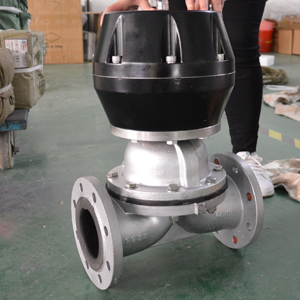
Q3: Are weir diaphragm valves compatible with specialized designs like 3 way diaphragm valves?
Weir diaphragm valves can be adapted into various configurations, including 3 way diaphragm valves, to meet multi-port flow requirements. While primarily used for isolation and control, the weir design is versatile enough to be integrated into complex systems. This adaptability, combined with their ability to handle diverse media and comply with sanitary standards, makes them valuable for applications involving intricate flow arrangements or frequent cleaning demands.
Conclusion Weir diaphragm valve
Understanding the key differences between weir and straight-through diaphragm valves is crucial for selecting the right solution tailored to specific applications. A weir diaphragm valve offers precise flow control and exceptional performance in handling corrosive or abrasive media, making it a dependable choice for industries requiring durability and reliability. On the other hand, straight-through models excel in hygienic applications and high-viscosity fluid handling due to their streamlined design. Trusted diaphragm valve manufacturers provide a range of options, including advanced configurations like the air actuated diaphragm valve and models equipped with a diaphragm valve pneumatic actuator. By evaluating application conditions and leveraging these distinctions, decision-makers can ensure optimal performance, efficiency, and compliance with operational standards.

